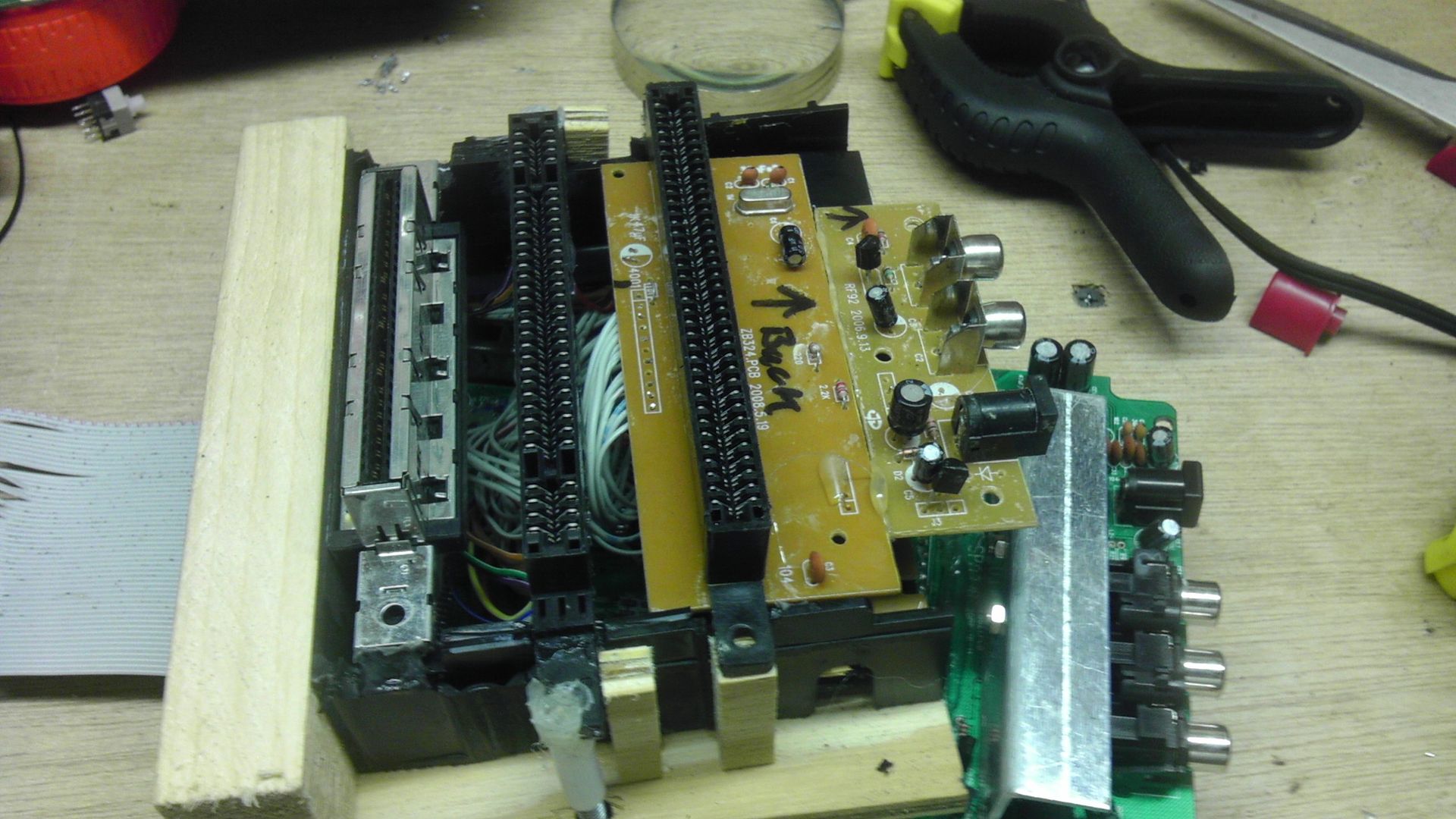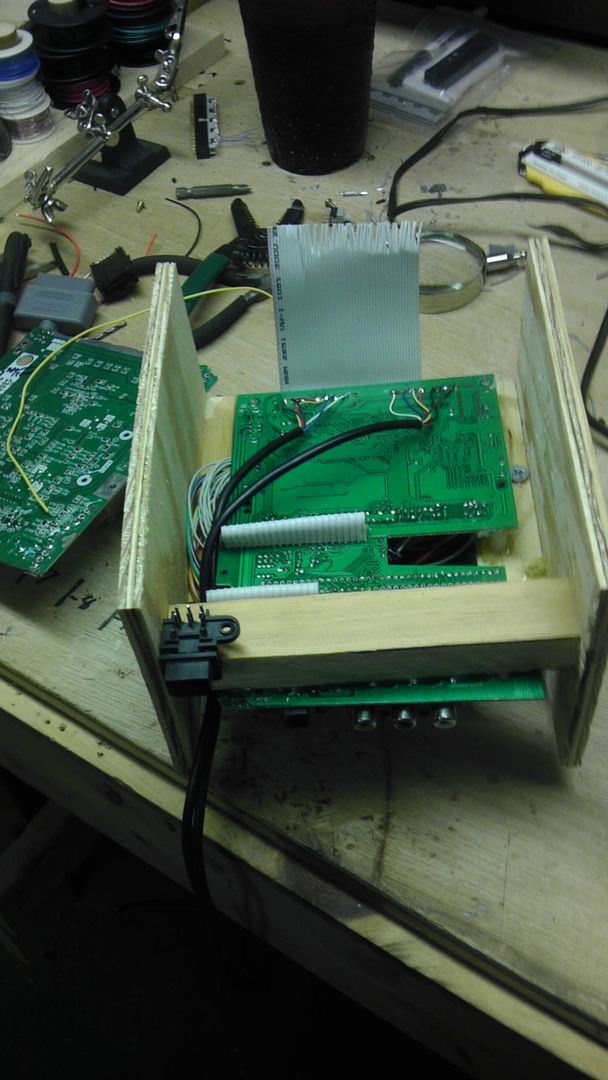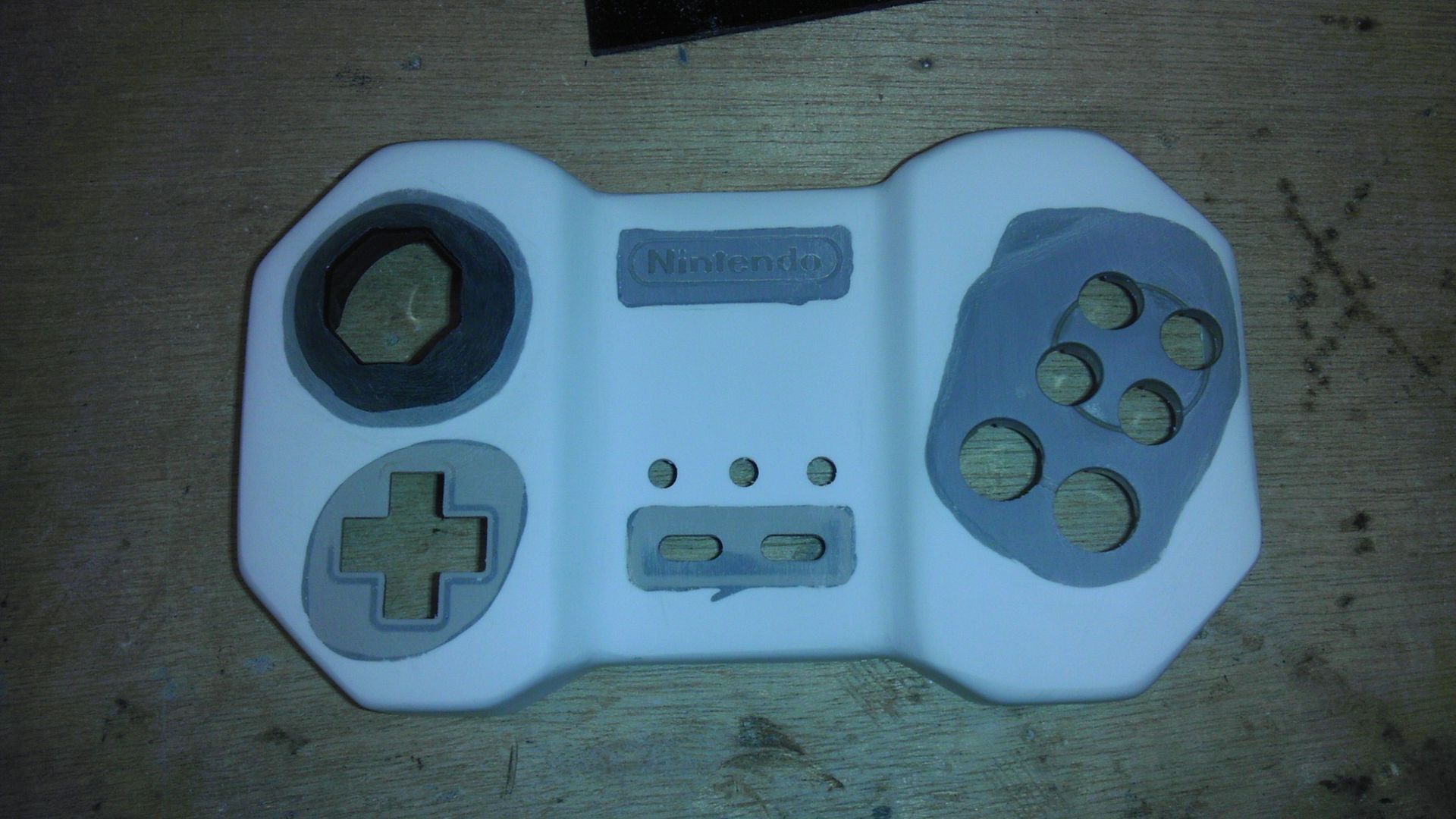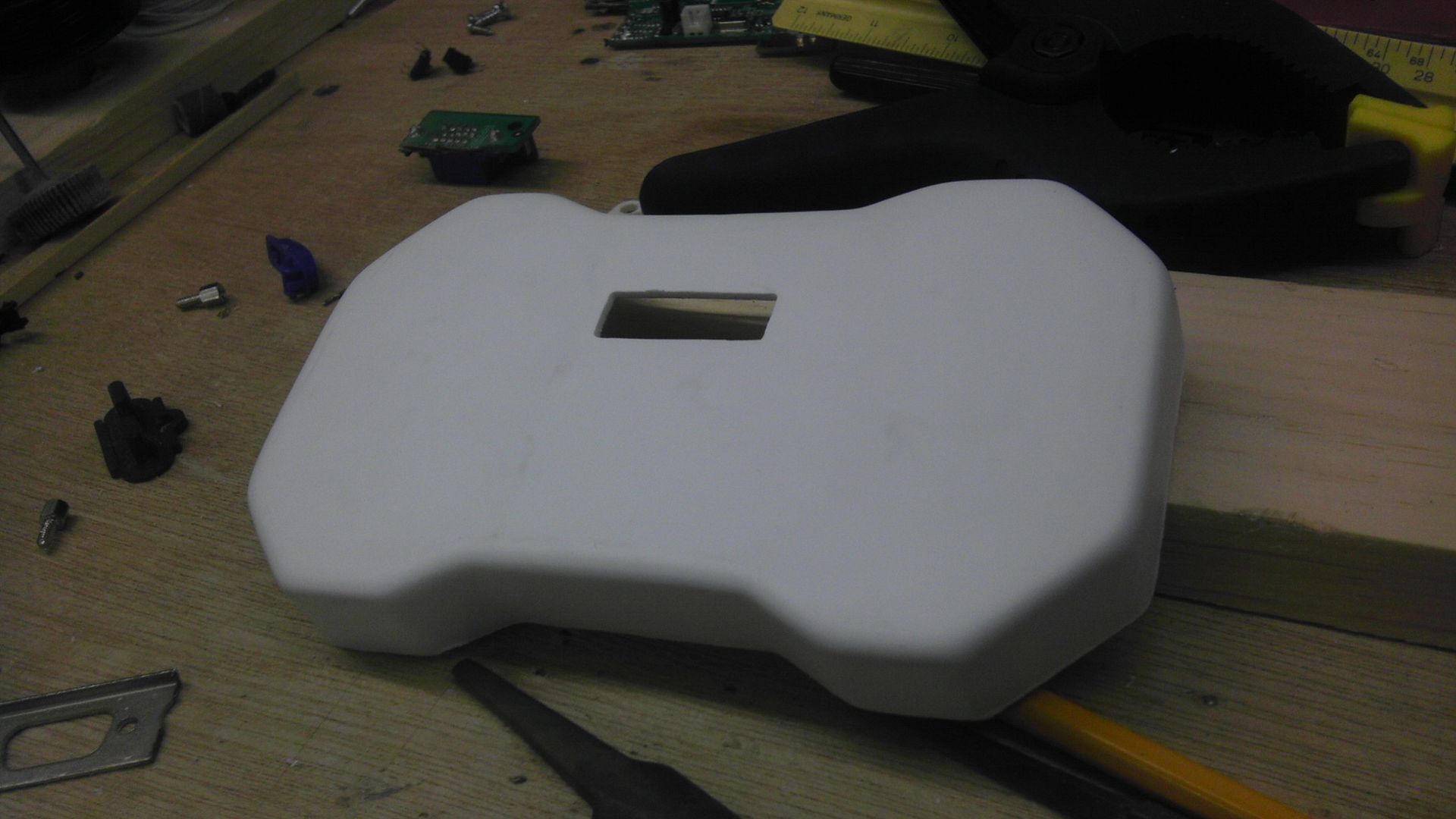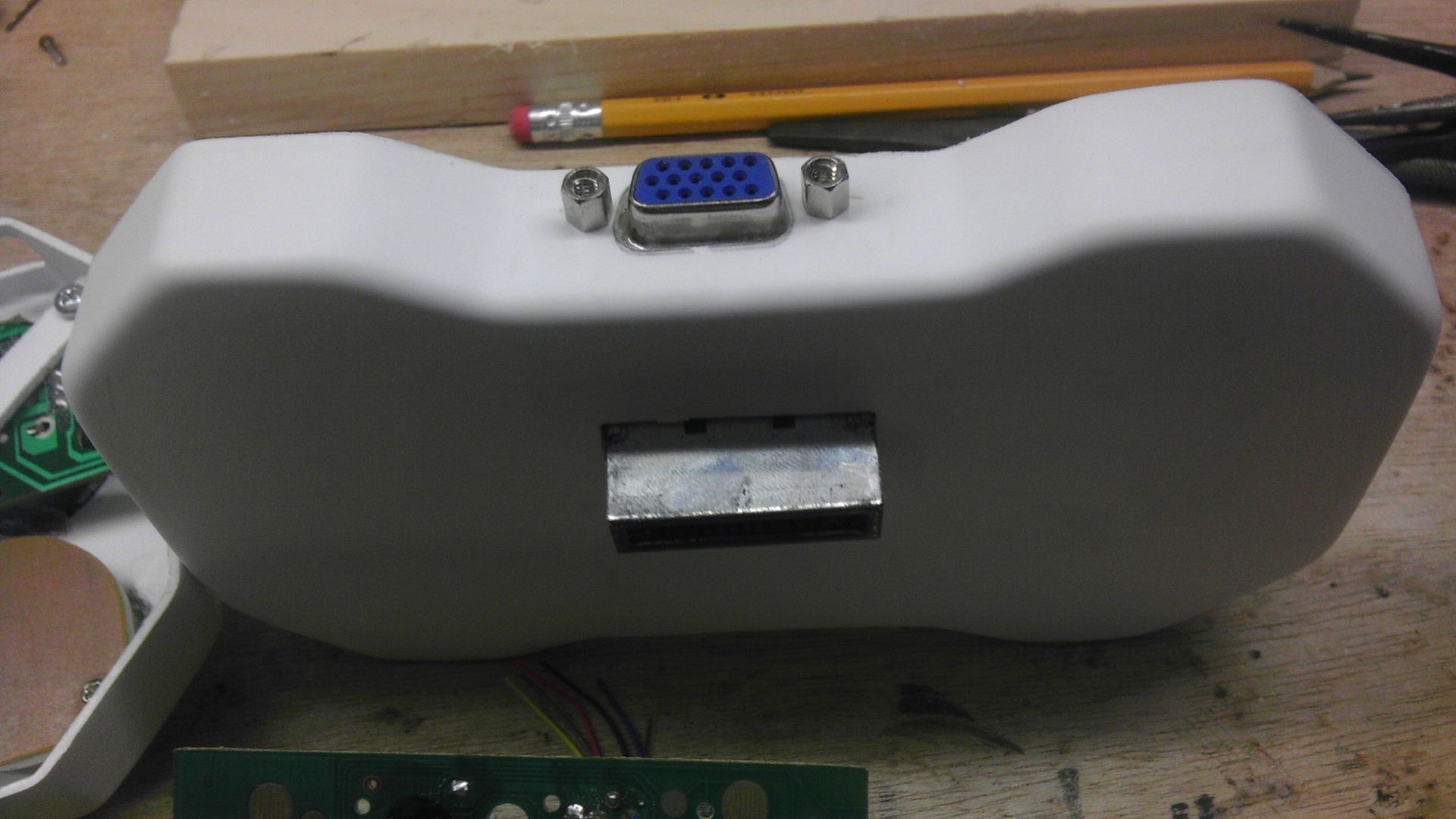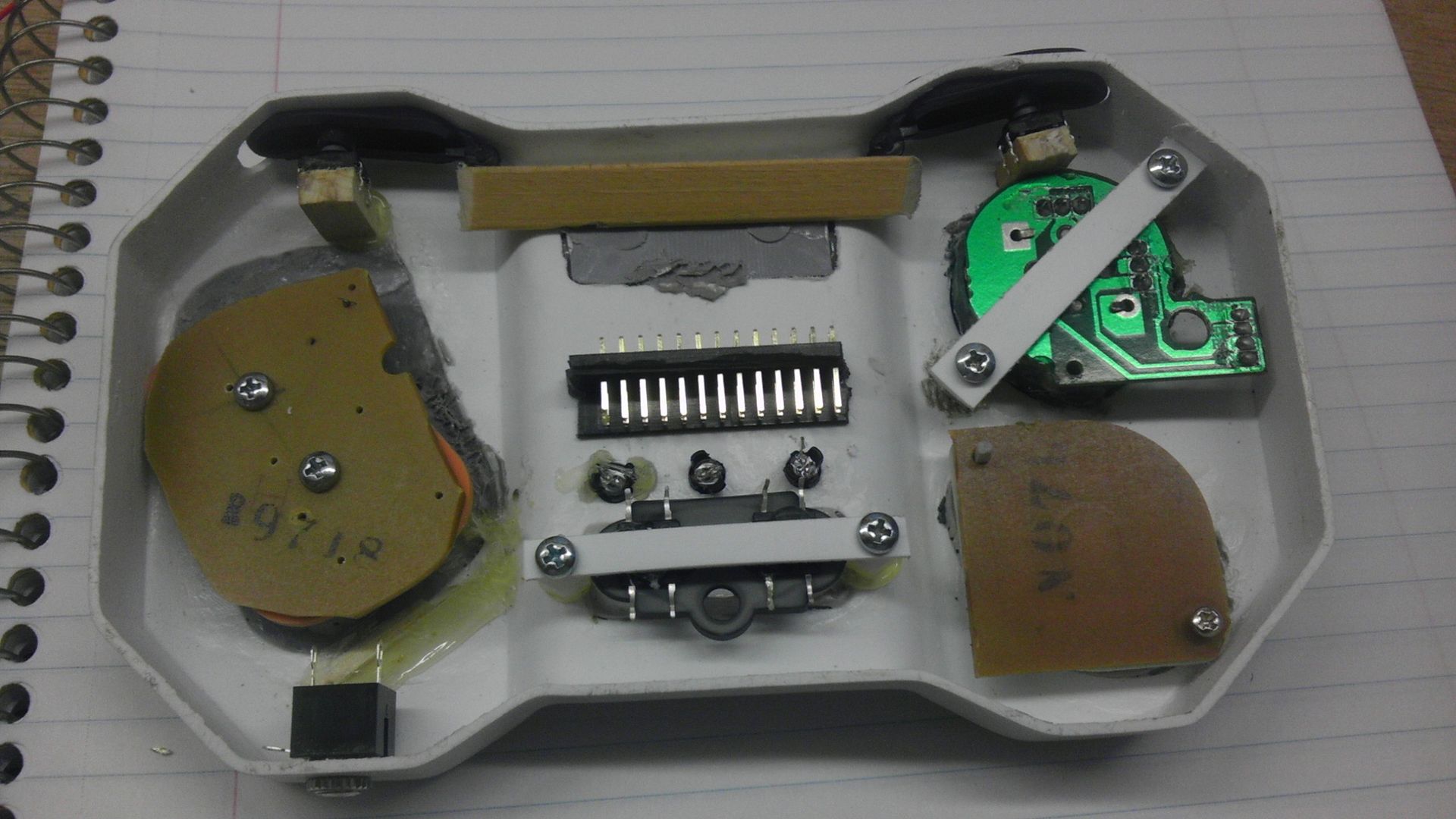Significant update for today. Between today and Friday I've managed to get a final layout for the controller as well as start the wiring process. I'm waiting on 5 or 6 SNES controllers to come in the mail so I can put one of the boards into the controller so then I have all three ready to go.
Before I go on I'd just like to thank everyone who showed up for my web session today though. Had Akari and Shock Slayer live with the video feeds and Conker, Electro Modder and Skullkid setting in during chat. That's really an awesome way to spend an afternoon, just modding and chatting. Again, look to the Tiny Chat thread to see when I'm on, or subscribe to the topic or me on twitter because I make a post every time I get on. It's a lot of fun!
But getting back to the project, I made a major design change with the controller which included having the controller boards right in the handset itself as opposed to being in a separate box inside the desk. I did this because I got to thinking that the resistance from the button presses having to travel 6+ feet and then go 6 feet back to register just wasn't worth the risk. Keeping the controller boards within just a few inches is a much better way to go about, but I had to make the controller a bit thicker as a trade-off. However, the controller is still only 1.5" (36mm) thick and is quite comfortable.
So I vac-formed the back half to an even 3/4" and started making the cuts for the N64 Memory pak and the output to the control ports on the systems. Now because of the change, I didn't need 25 wires, so I dropped down to a VGA cable with 15. I like this as well because I'll be able to simply unscrew the cable from the controller and control box when not in use.
Here you can see the hole for the memory card.
Here is the hole for the VGA Receptacle.
And here is the case with the N64 PCB and VGA receptacle mounted in place.
After they were mounted, I started wiring up the Super Pad controller. Strangely enough, this was my second Super Pad as I screwed up the first one, but when I opened up this one, I found that it was nearly a completely different layout than the first one which is located in the reference section. I was lucky I was able to make it fit as the traces below the D-Pad were very near the bottom of the controller and I had already cut the hole for the memory card slot and it just barely fit being trimmed down. I've got the room so I am trying to do as little reduction as possible because soldering to the big copper pads is much easier and more secure than soldering to just a trace. And this is the biggest board of them all so I should be good. I know how to make a SNES board super small though as well (from my SNEXBOX controller I did) so I shouldn't run out of room.
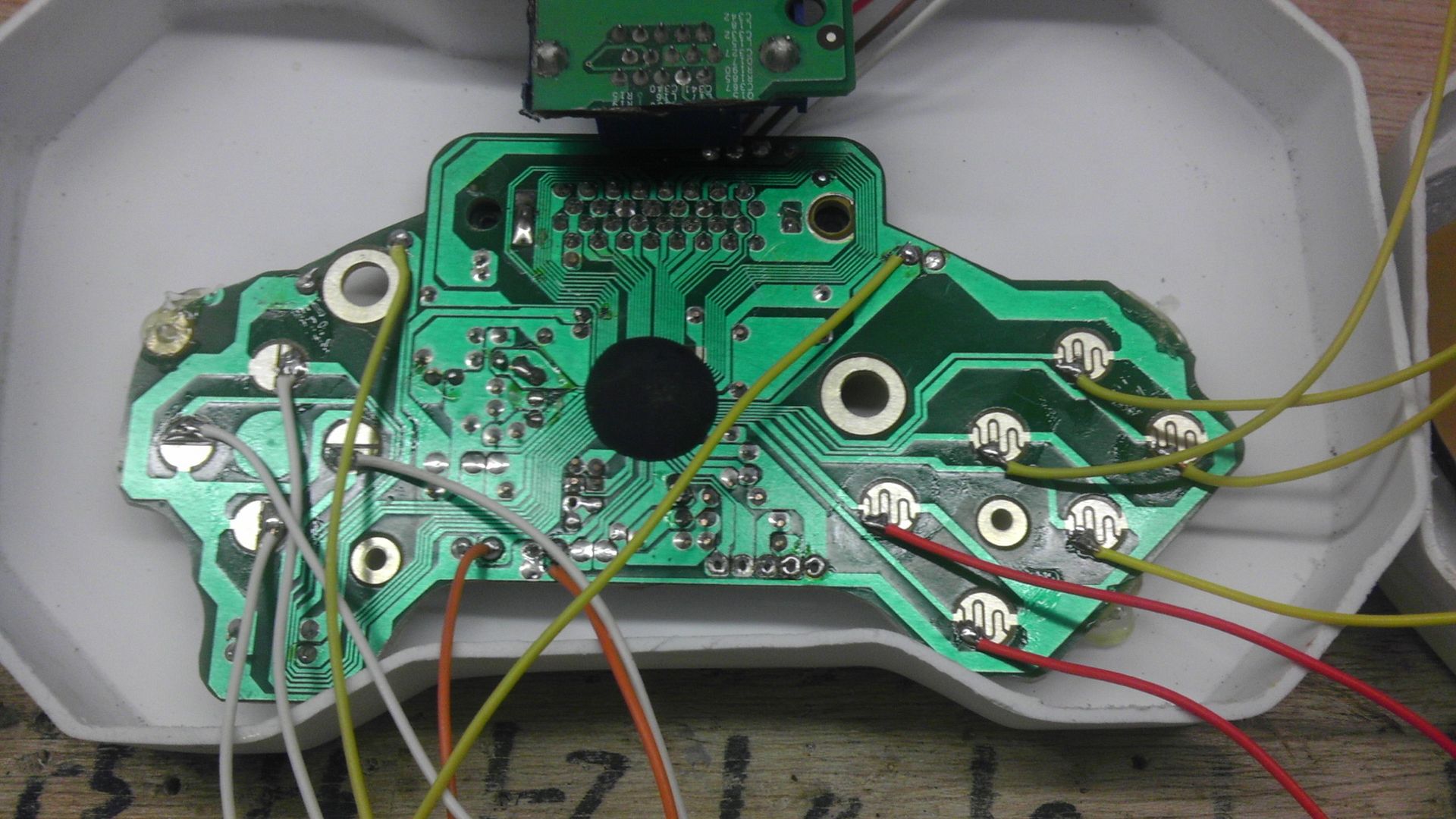
After I wired that up, I realized before I could do any testing of the connections I had to finish mounting all the buttons in the front half of the casing.
First I mounted the shoulder buttons. I decided that L is going to double as the Z button on the N64 and I'll most likely be putting in a switch as with most N64 games, L is never used the same time that Z is just because of the way the original controller was laid out. This will be very simple and will save me a wire.
For the moment, the tact switches are just held in place by hot glue and pine. Though it's pretty strong, the one on the left will need to be reinforced a bit to make sure it doesn't bend over when pushed too hard. The long strip of pine in the middle holds both ends of the R & L buttons pinning them between it, so they are allowed to move up and down but not sided to side. Simple and effective.
I next took two 4-40 Nylon hex standoffs and glued them on either side of the start and select buttons. I then took a piece of plastic styrene, drilled holes on either end to match up with the stand-offs and then glued two tact switches in place. I've really liked the idea of using screws to hold components in place because of the ability to adjust and remove with ease. They also hold much better than glues and seems to make the button presses feel more natural.
Next I took a 50 pin shrouded header, cut it in half, removed three sides of the shroud and super glued it to the deck. This is going to be the junction point for the buttons.
I then fit the three white LED's into their holders so now they are ready to have their resistors put in place and wired up when ready.
And finally where I finished off, I got the D-pad and the Start/Select buttons wired to their proper pin locations. You can probably see how this is going to work. On the top side of the header, the signal goes from the button to the header pin. As for the opposite side, most pins will have three wires converging on that one pin. So buttons A & B will have 3 wires each but C-up and C-R will only have one.
Like I said, I'm not sure I'll have to put master ground breaks depending on what system is in use at the time because they will all be sharing a common ground but that is a simple fix if need be.
Phew...that was a long winded update, but it's been a lot of fun and this has been my last free week before my new job starts, as well as it being too hot to go outside for any length of time. Probably gonna get back too it in a bit, but I won't be broadcasting it as I'm pretty tired ATM.

